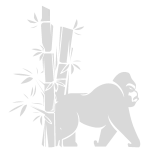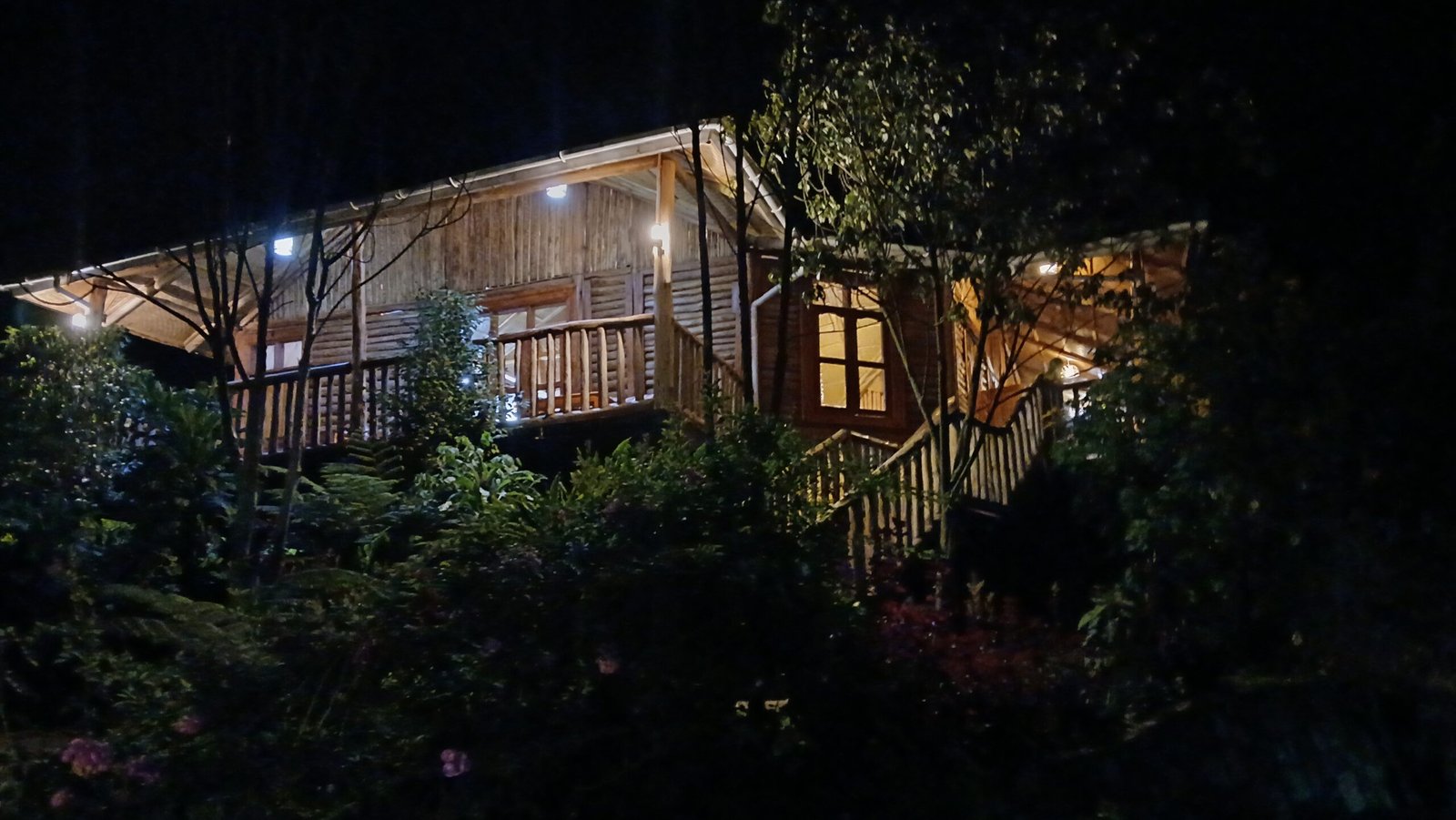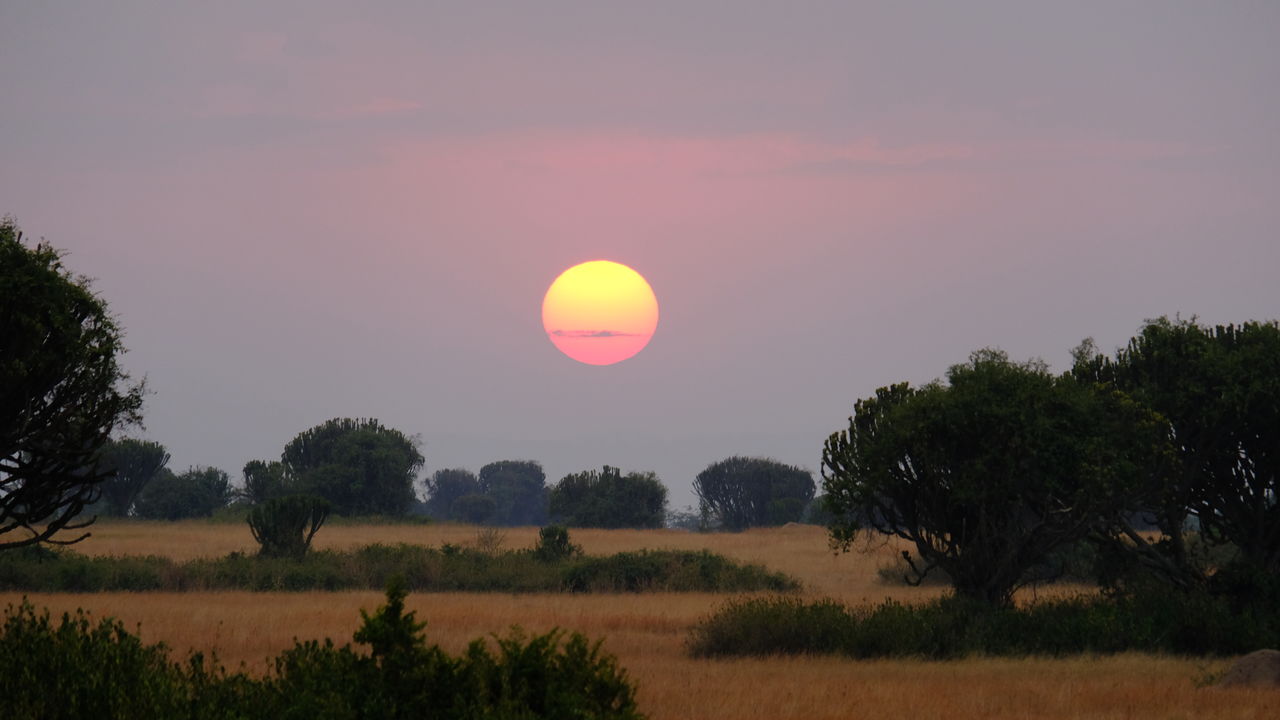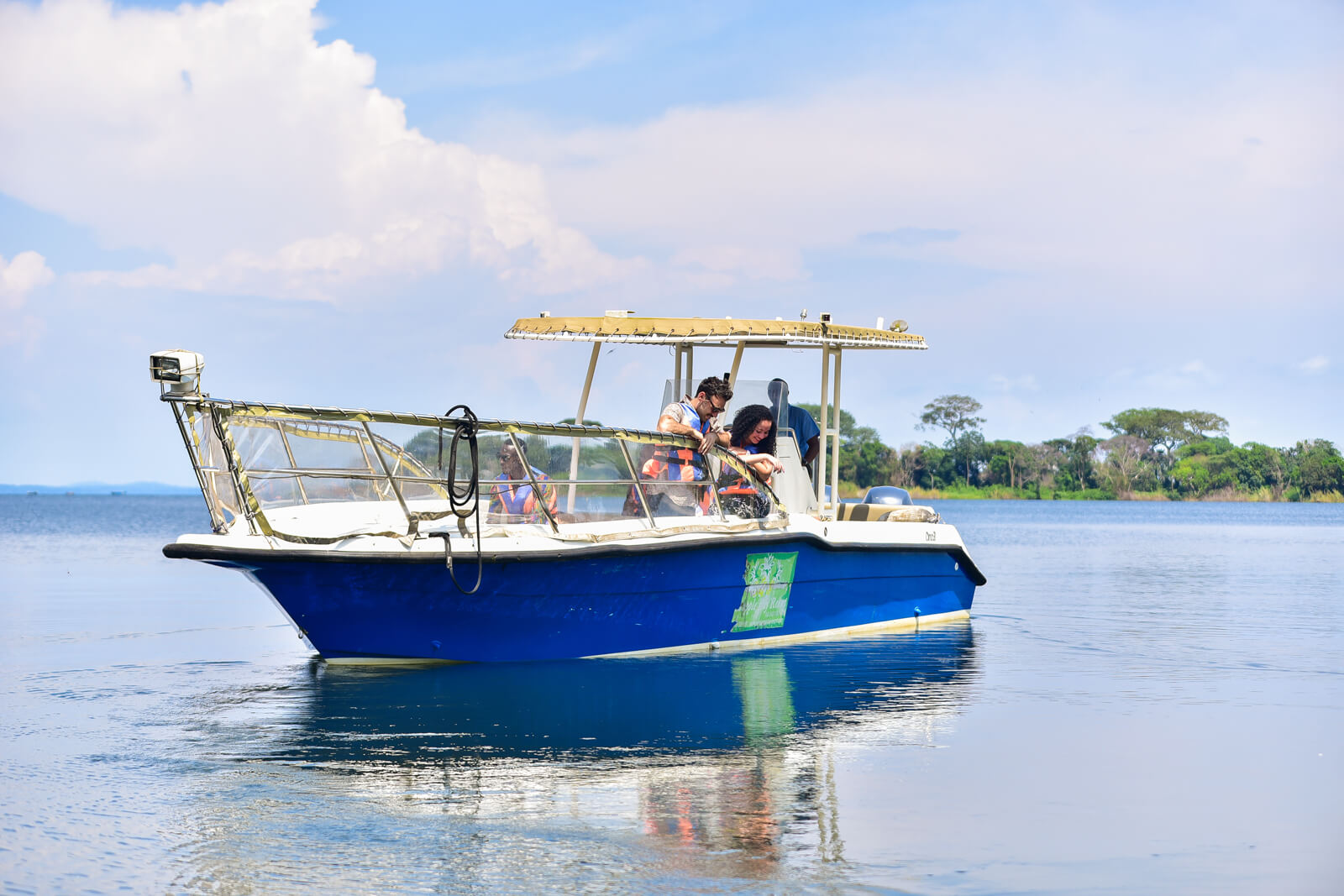Kibale National Park
Kibale National Park
Kibale National Park is located in western Uganda’s vibrant heartland, about 326km from Kampala. Also known as Kibale Forest National Park, it is one of the most beautiful and accessible tropical rainforests in Africa. The park covers almost 800km2 and is home to 13 different primate species. Almost nowhere in Africa do so many different primates live in one forest. However, what makes Kibale truly special is its chimpanzees.
Around 1500 chimpanzees live here in the wild. Chimpanzee trekking in Kibale Forest is the best way to see these special primates in their natural home. Their calls, hoots, and screams, pierce the air, and suddenly, they appear swinging nimbly through the trees or foraging on the ground. The sight is unforgettable and offers a rare glimpse into the lives of our closest living relatives. These intelligent primates move through the forest with fluid grace, their complex social behavior and human-like interactions are fascinating to both researchers and visitors.
Kibale is a beautiful, misty forest located at an altitude of 1,100 to 1,600 meters. At the lowest areas, you’ll find swamps with tall papyrus plants. Around it is the primeval trees of more than 50 meters high. The park is also home to baboons, colobus, blue, and red-tailed monkeys. Besides monkeys and lush trees, Kibale is full of other wildlife, including rare forest elephants, colorful birds, and around 250 butterfly species in all sizes and colors.


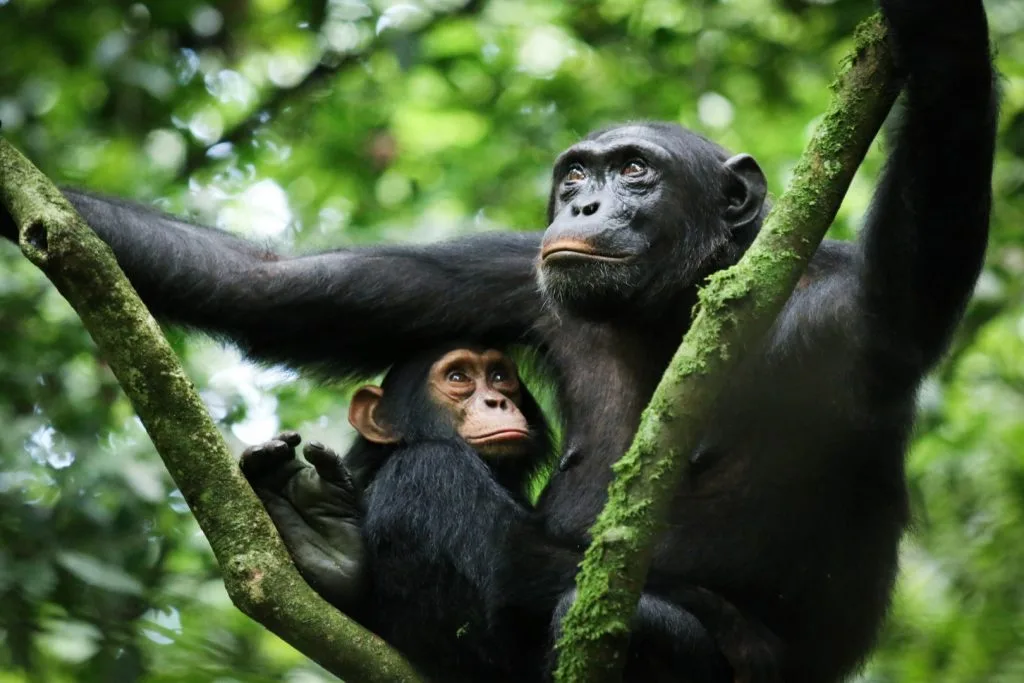
Why Visit Kibale National Park in Uganda?
1. Chimpanzee Trekking
Kibale National Parkis known for its habituated chimps, who are accustomed to human presence, allowing visitors to observe their behaviors up close. Early in the morning, you will join local guides on trek through the primeval forest, carefully ducking under low-hanging vines as you search for the chimps.
The trek usually lasts around 2 to 3 hours. When you start hearing the chimps’ calls from the distance, it gets really exciting! Soon, you will be right there, face to face with these incredible primates who about 98% of the human gene. It’s an unforgettable experience! It’s a good idea to book the chimpanzee trek in advance since there are only a limited number of permits available each day.
2. Chimpanzee Habituation
An even more unique experience than regular chimp trekking is the Chimpanzee Habituation Experience. On this adventure, you’ll be accompanied by research in search of chimpanzees. You’ll spend a half- or full-day in the forest, starting at the break of dawn. The intention is to gradually introduce unhabituated chimpanzees to the presence of people, a painstaking process that may take several years to accomplish.
It is slightly more expensive and requires considerably more patience than regular trekking, often venturing further into the depths of the forests. However, you’ll have plenty of time to learn about the chimps, the many butterfly species, the ancient forest, and other animals living there, all while observing them closely. It’s a fantastic experience for travelers who want to fully immerse themselves in the Kibale Forest!
3. Bird Watching
Kibale National Park is a dream come true for bird lovers, with over 370 bird species including 6 Albertine Rift Endemic. For passionate birdwatchers, the list avian occupants is like an exciting story, featuring species like olive long-tailed cuckoo, western tinkerbird, African pitta, African grey parrot, black bee-eater, red-chested owlet, black-eared ground-thrush and the innately comic great blue turaco – could it get better than this? The answer is yes because there is one particular feathered occupant that, upon its discovery in the park in 2005, saw birding interest in Kibale Forest National Park skyrocket – the green-breasted pitta. These colorful and mysterious little birds are only found deep in Central Africa’s tropical forests and, despite their spectacular kaleidoscope of colors, are surprisingly very had to spot. Not many birders have had the good fortune of laying eyes on the green-breasted pitta.
4. Night Forest Walk
As night falls, Kibale Forest takes on a whole new vibe. A special night walk might let you spot the shy East African pottos, a type of nocturnal primate, and adorable galago bush babies with their enormous eyes. With an expert local guide and the help of a flashlight, you’ll explore the forest’s mysterious side, where the sounds of chirping insects, rustling leaves, and distant animal calls become more pronounced. This is the time when many of the park’s nocturnal creatures, such as frogs, bats, and owls, come to life, and you’ll witness a different side of Kibale’s wildlife. The night walk is a unique way to experience the forest’s hidden secrets and see how the wildlife behaves after the sun sets.
5. Bigodi Community & Swamp Walk
Just 10 minutes from Kibale National Park is the Bigodi Swamp, a community-run project dedicated to protecting this unique area. The swamp is home to eight different species of primates, and you’ll also spot around 200 bird species, including the beautiful Great Blue Turaco. A walk-through Bigodi Swamp typically takes about two hours, giving you a chance to explore this rich, vibrant ecosystem. In addition to the swamp, you can take a fascinating Bigodi Community tour, where you’ll dive into the local culture and traditions.
On this guided village walk, you’ll interact with the community, learn about their traditional crafts, cooking, and farming practices, and discover how they’ve worked to protect the area’s natural beauty. It’s a wonderful way to connect with the people, experience their way of life, and see firsthand how they live in harmony with nature. The cultural tour is the perfect complement to the natural exploration of Bigodi, offering a full experience of both the land and its people.
6. Crater lakes and tea plantations
The Kibale National Park area is not just known for its chimpanzees and birdlife. It’s also home to stunning crater lakes, created by volcanic activity, and lush tea plantations on rolling hills, offering a beautiful setting for various walks. You can hike through local villages to reach a “top of the world” viewpoint, watch tea leaves being picked, and even learn about the scene featured on the 20,000 Ugandan shilling note. It’s a great way to enjoy both nature and culture in this picturesque region of Uganda.
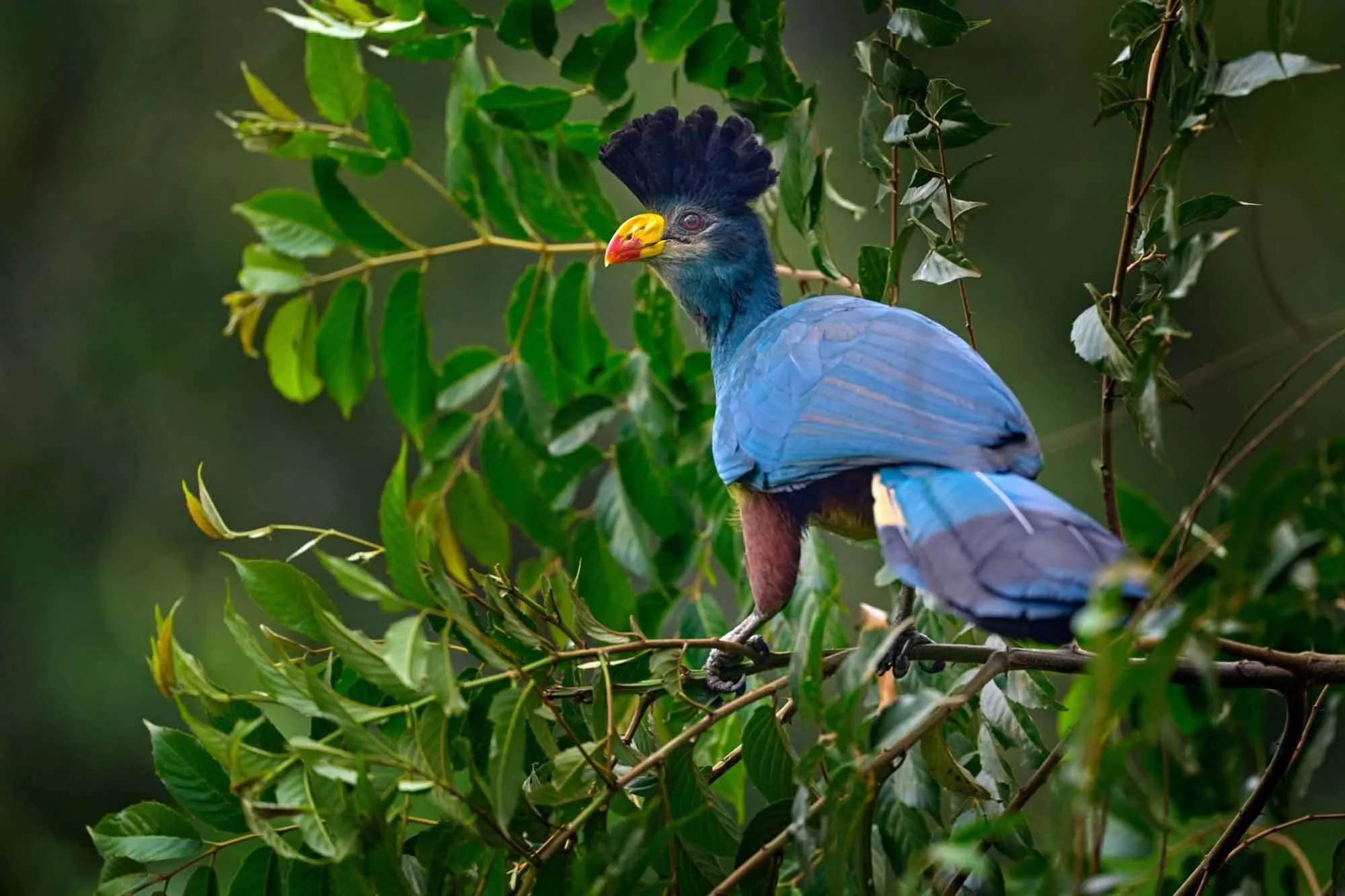
Kibale National Park Accommodation
Accommodation around Kibale National Park caters to all types of travelers on a Uganda safari, ranging from basic campsites to luxurious lodges tucked deep in the forest. Many eco-lodges are built using sustainable materials, featuring thatched roofs that blend naturally into the environment. These lodges often have open dining areas where guests can enjoy meals while listening to the sounds of the forest at night. For a more outdoorsy experience, tented camps offer a close-to-nature stay, with canvas tents set up on wooden platforms.
Orugano Bwindi Lodge
Our lodge, Orugano Bwindi Lodge, is the perfect place to stay if you’re planning to go gorilla trekking in the Nkuringo Sector of Bwindi. It’s close to both the Virunga Volcanoes in Mgahinga Gorilla National Park and the beautiful Lake Mutanda. The Nkuringo area is home to several gorilla families, including Nkuringo, Bushaho, Christmas, Nkuringo, and Posho. This part of Bwindi is known for being the most scenic, with stunning views of the Virunga volcanoes.
How to Get to Kibale National Park
Kibale National Park is about 326 kilometers from Uganda’s capital, Kampala, which is roughly a 5-hour drive west. The road trip takes you past tea plantations, rolling hills, and small towns where you can find roadside stalls selling fresh fruit. The last part of the journey is on red-dirt roads that give a glimpse of Kibale’s remote location, with lush forest surrounding you.
If you’re already visiting other parks in Uganda, Kibale is easy to reach. From Queen Elizabeth National Park, it’s a scenic two-hour drive through the crater lakes region, where deep blue waters contrast with green hills. The road can be bumpy, especially after rain, but the stunning landscapes make the slower pace worthwhile. Traveling from Bwindi Impenetrable National Park takes a full day by road, but the journey through rural Uganda lets you experience its diverse landscapes. For those looking to skip long drives, flights from Entebbe International Airport go to Kasese airstrip, which is about two hours from Kibale.
How much does a Kibale safari cost?
The most affordable 2-day chimp trekking packages to Kibale typically cost between US$800 and US$950 per person. This price covers transport, one night’s accommodation, meals, and park and activity fees, including a US$200 chimp trekking permit. Longer tours that include visits to other parks usually cost around US$250 to US$500 per day, unless they include gorilla trekking, which would significantly increase the price due to the US$800 gorilla trekking permit.
